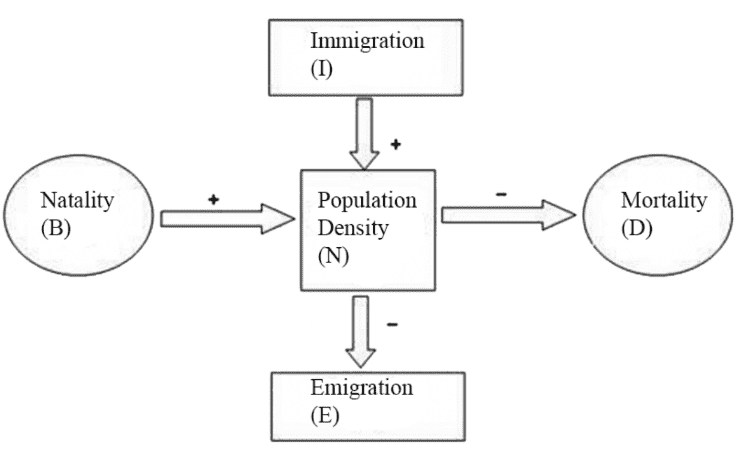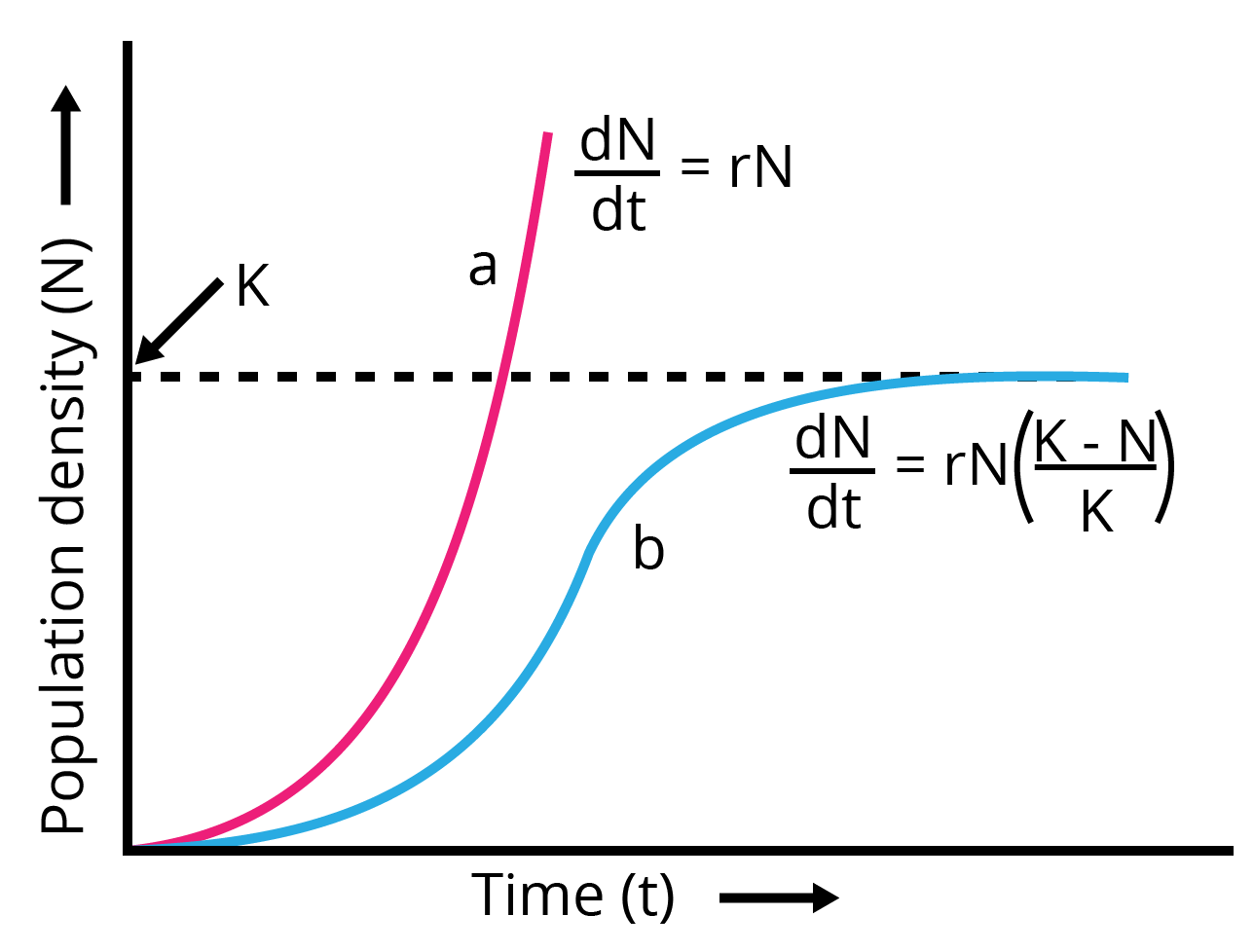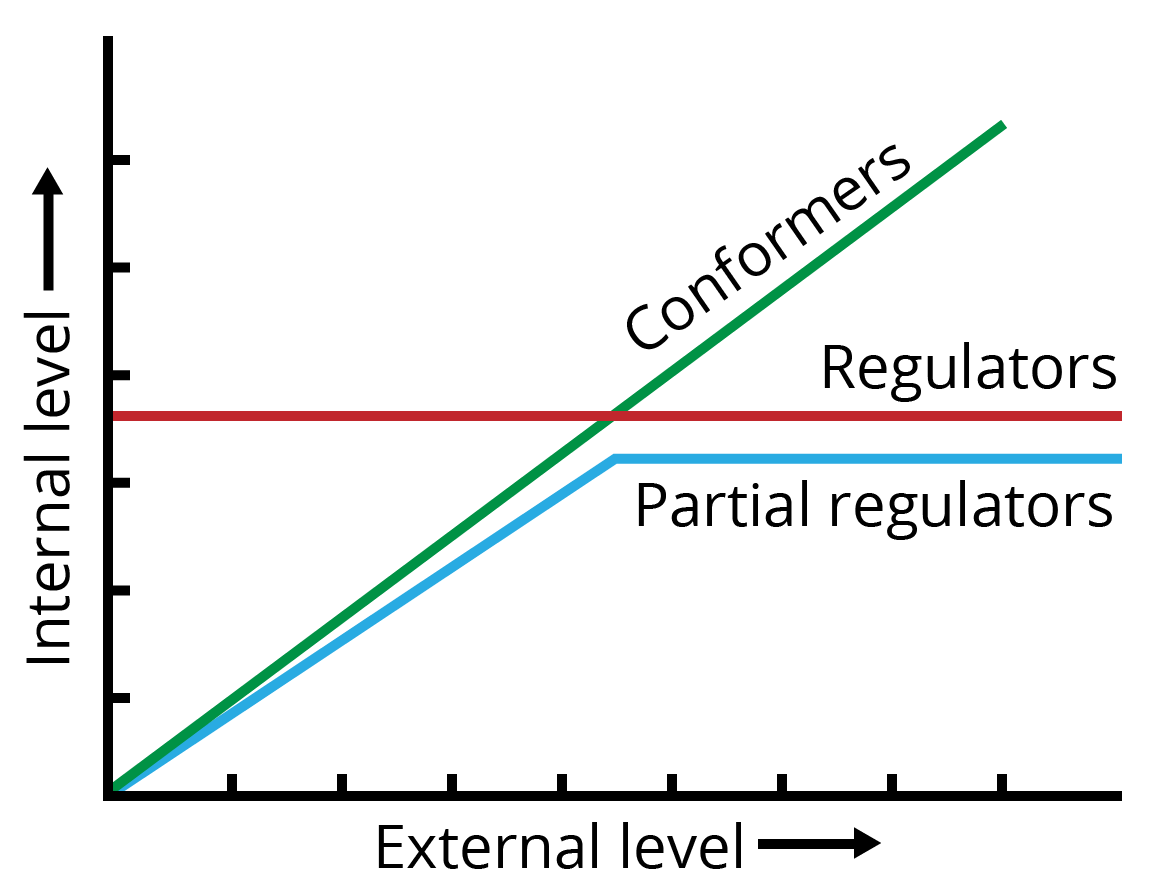Organisms and Populations Class 12 important questions with answers PDF download


FAQs on CBSE Important Questions for Class 12 Biology Organisms and Populations - 2025-26
1. What types of questions from the chapter ‘Organisms and Populations’ are frequently seen in the CBSE Class 12 Biology board exams (2025–26)?
Frequently asked questions cover concepts like population growth models (exponential and logistic), types of population interactions (competition, predation, mutualism), adaptations in different habitats, and age pyramids. HOTS (Higher Order Thinking Skills), marking trends, and questions comparing key adaptations or ecological principles are commonly included for 1, 3, and 5 marks as per recent board patterns.
2. What is the main difference between exponential and logistic growth models, and how does this relate to real-world populations?
Exponential growth occurs when resources are unlimited, resulting in a J-shaped curve, described by the equation:
$\dfrac{dN}{dt} = rN$.
Logistic growth takes into account limited resources, producing an S-shaped (sigmoid) curve, with the equation:
$\dfrac{dN}{dt} = rN \left(\dfrac{K-N}{K}\right)$.
Logistic growth is considered more realistic for natural populations as resources are never truly unlimited.
3. List the four levels of biological organization with which ecology deals, as highlighted in board-important questions.
The four levels are:
- Organism
- Population
- Community
- Biome
4. How do abiotic factors like temperature and salinity affect the survival and distribution of organisms, based on CBSE important question patterns?
Abiotic factors determine the physiological limits of organisms. Temperature influences metabolic rates; stenothermal species tolerate narrow temperature ranges, while eurythermal species tolerate broad ranges. Salinity impacts osmoregulation; euryhaline organisms survive in varying salinity, whereas stenohaline are restricted to narrow ranges. These factors directly impact organism distribution and exam-relevant examples include aquatic and desert species.
5. What are the most exam-relevant adaptations helping xerophytes and hydrophytes survive in extreme conditions?
Xerophytes possess thick cuticles, sunken stomata, reduced leaves, deep roots, and use the CAM pathway to conserve water. Hydrophytes have reduced root systems, aerenchyma (air spaces) for buoyancy, flexible stems, and thin leaves; adaptations that enable survival in aquatic environments. CBSE exams often test on specific structural and functional differences.
6. What is Gause’s competitive exclusion principle, and how can different species still coexist in the same habitat?
Gause’s principle states that two closely related species competing for the same resources cannot coexist indefinitely when resources are limited; one will eliminate the other. Coexistence is possible through resource partitioning, where species use different resources or occupy distinct niches, as seen in warbler species foraging at various tree levels.
7. Why do small animals find it hard to regulate internal body conditions, as per important board questions?
Small animals have a large surface area to volume ratio, causing them to lose heat rapidly. Regulation of internal conditions is energetically expensive, making it impractical for small organisms. As a result, many are conformers that do not maintain constant internal environments and are more sensitive to environmental changes.
8. What are the main types of population interactions, and can you give one board-relevant example of each from this chapter?
The main types are:
- Competition: both species harmed (e.g., native fish and flamingos competing for zooplankton)
- Predation: one benefits, one harmed (e.g., sparrow eating seeds)
- Mutualism: both benefit (e.g., fungus and algae in lichens)
- Commensalism: one benefits, other unaffected (e.g., orchid on mango tree)
- Parasitism: parasite benefits, host harmed (e.g., Plasmodium in humans)
9. How do you interpret the shapes of age pyramids in population ecology for board exams, and what common errors do students make?
Expanding pyramids have a wide base (growing population), stable pyramids are column-like (births ≈ deaths), and declining pyramids have a narrow base (shrinking population). Common misconception: Shape is determined only by current size, but it actually reflects past growth trends and predicts future changes.
10. Why is predation considered crucial in an ecosystem, as per important board questions?
Predation regulates prey populations, prevents resource overuse, drives natural selection, and helps maintain community species diversity, making it an essential ecological process recognized in board-level questions and answers.
11. If a highly efficient predator drives its prey extinct, what long-term ecological effect could this have? (HOTS)
Eliminating its prey, the predator may soon face starvation and risk extinction itself. This demonstrates the importance of ecological balance and is a key exam topic under predator-prey dynamics.
12. Compare and contrast hibernation, aestivation, and diapause, using board-relevant examples for each adaptation.
Hibernation: Dormancy in cold (e.g., polar bears, frogs).
Aestivation: Dormancy in hot/dry conditions (e.g., snails, fish).
Diapause: Developmental suspension during unfavourable periods (common in insect life cycles, e.g., zooplankton).
These adaptations help organisms survive unfavourable environmental conditions, a key point in exam-oriented answers.
13. How does resource partitioning enable species with overlapping niches to coexist? (Frequently examined HOTS)
Resource partitioning involves species using the same resource in different ways—spatially, temporally, or by targeting distinct parts—thus minimizing direct competition. For instance, multiple warbler species forage at different levels within the same tree canopy, enabling coexistence. This concept directly addresses common board-level application questions.
14. What adaptations have evolved in brood parasitism, and why is this phenomenon significant in exam questions?
Brood parasitism is when one bird lays eggs in the nest of another species (e.g., cuckoo on crow). Adaptations include mimicking egg coloration and size to avoid detection by the host. Understanding this highlights evolutionary strategies and is frequently tested for 3- or 5-mark questions.
15. What is the ecological significance of conformers compared to regulators among organisms?
Conformers do not regulate internal conditions, so their distribution is limited to environments suited to their tolerance range. This saves energy but increases environmental sensitivity. Regulators expend more energy but can inhabit a broader range of habitats, maintaining homeostasis under varying conditions—a topic of board-level functional importance.




























